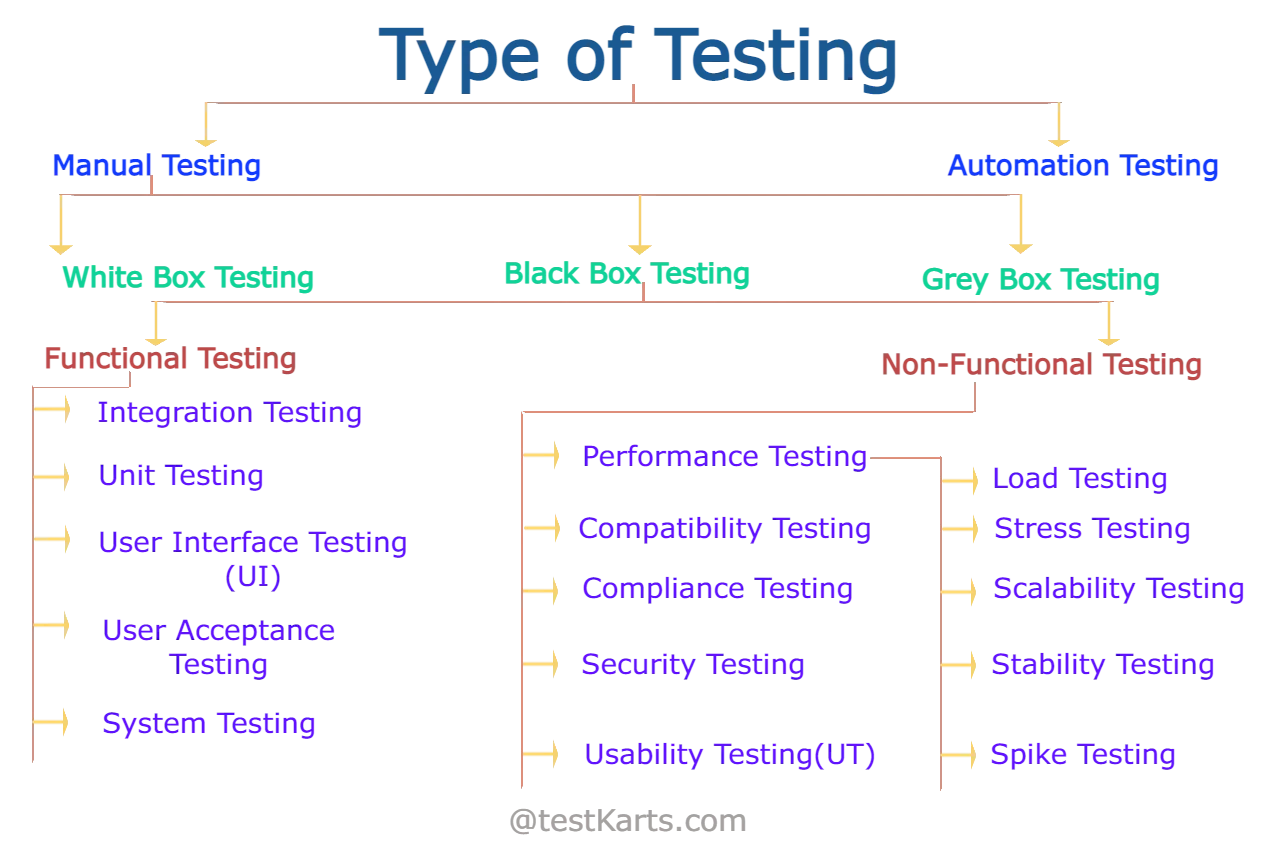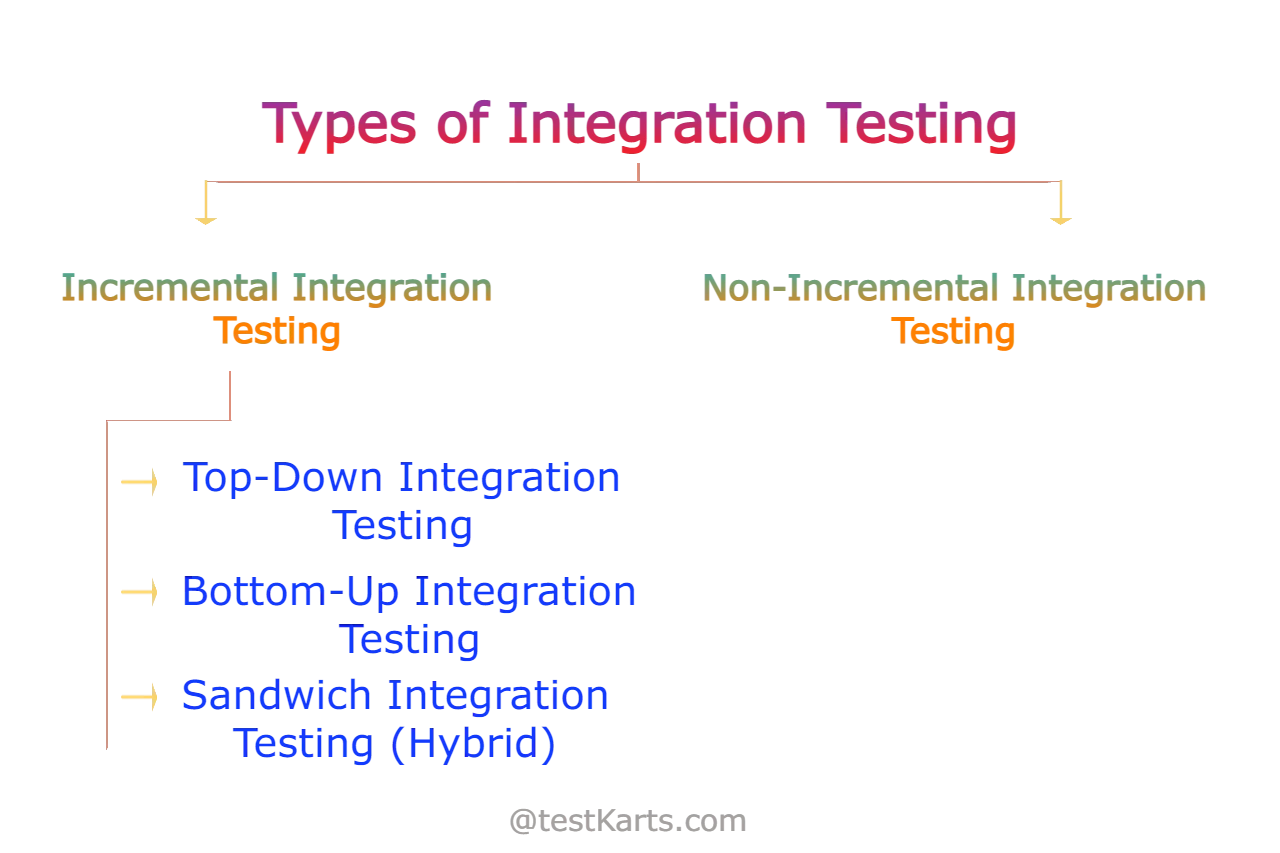Testing Types
Software testing is an integral part of software development that ensures software quality and reliability. Testing is a process of verifying a software application's functionality, usability, and performance based on various parameters and approaches.
There are different types of software testing, and in this tutorial, we will categorize and explore them in detail.


Software Testing Types:
Software testing can be broadly categorized into two types:
- Manual Testing
- Automated Testing
Manual Testing:
Manual testing is the process of verifying the software application's functionality, usability, and performance manually. In this type of testing, testers execute test cases without using any automated tools or scripts. It is primarily based on the tester's experience, knowledge, and skills.
Automated Testing:
Automated testing is the process of testing software applications using automation tools and scripts. It involves writing and executing test scripts, and it is faster and more efficient than manual testing. Automation testing is ideal for repetitive tasks and large test suites.
Types of Manual Testing:
- Grey Box Testing
- White Box Testing
- Black Box Testing
Gray-box testing (Spelling in International English: grey-box testing)
Grey Box Testing:
Grey box testing is a type of testing that combines both black box and white box testing approaches. Testers perform this testing by having limited access to the software application's internal structure and code.
White Box Testing:
White box testing is a type of testing that focuses on the software application's internal structure, code, and logic. Testers perform this testing by analyzing the code and its behavior.
Black Box Testing:
Black box testing is a type of testing that focuses on the software application's inputs and outputs without considering its internal structure or code. Testers perform this testing from an end-user perspective.
Types of Black Box Testing :
- Functional Testing
- Non-Functional Testing
Functional Testing:
Functional testing is a type of testing that focuses on the software application's functional requirements. It ensures that the application meets the specified requirements and performs the intended functions.
Non-Functional Testing:
Non-functional testing is a type of testing that focuses on the software application's non-functional requirements, such as performance, security, usability, and scalability.
Types of Functional Testing:
- Unit Testing
- User Interface Testing(UI)
- System Testing
- User Acceptance Testing
- Integration Testing
Unit Testing:
Unit testing is a type of white box testing that focuses on testing individual units or components of the software application.
User Interface Testing (UI):
User interface testing is a type of white box testing that focuses on the software application's user interface and its behavior.
System Testing:
System testing is a type of white box testing that focuses on testing the system as a whole, including its components and their interactions.
User Acceptance Testing:
User acceptance testing is a type of white box testing that focuses on verifying if the software application meets the end-user's requirements and expectations.
Integration Testing:
Integration testing is a type of white box testing that focuses on testing how the software application's components interact with each other.
Here is the non-functional Testing are that most commonly used in the SDLC process of software testing-
Types of Non-Functional Testing:
- Performance Testing
- Security Testing
- Usability Testing
- Compatibility Testing
Non-functional testing is a type of testing that focuses on the software application's non-functional requirements, such as performance, security, usability, and scalability.
Performance Testing:
Performance testing is a type of non-functional testing that evaluates the software application's speed, response time, scalability, stability, and resource usage under varying load conditions.
Security Testing:
Security testing is a type of non-functional testing that evaluates the software application's ability to protect against unauthorized access, hacking, data breaches, and other security threats.
Usability Testing:
Usability testing is a type of non-functional testing that evaluates the software application's ease of use, user-friendliness, and user experience. It ensures that the application is intuitive and easy to navigate.
Compatibility Testing:
Compatibility testing is a type of non-functional testing that evaluates the software application's ability to function correctly across different platforms, devices, operating systems, browsers, and network environments.
In conclusion, testing is a crucial aspect of software development that ensures the software's quality and reliability. The choice of testing types depends on the software application's requirements, the SDLC model used, and the project's complexity.
 Youtube Link
Youtube Link